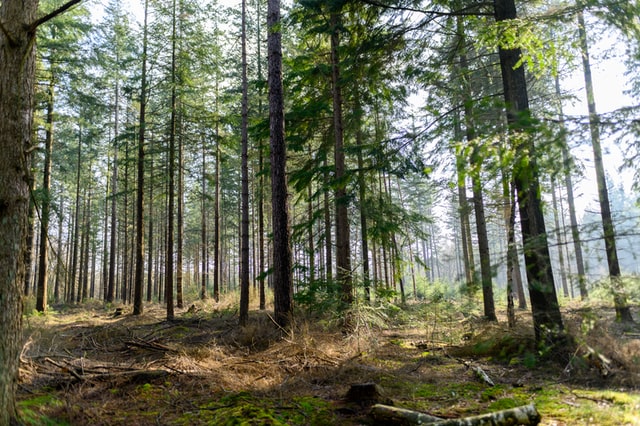All You Need To Know About Tree Thinning
This technique consists in removing a certain number of flowers or fruits which are less favored in nutrients all along the fruit bodies in order to obtain a regulated annual harvest of better quality, and without exhausting the tree.
The advantages of thinning
The desired goal of thinning is to shift the nutritional balance of the tree in a direction more favorable to the objectives of the arborist (yield and size). For effective thinning, it is indeed essential to ensure on the one hand the intervention period, on the other hand the severity of the operation.
In addition to the advantages for grading and harvesting, thinning allows:
Maintaining a uniform volume of harvest that will be more regular from one year to the next to avoid excessive harvests and ensure good flowering the following year (avoiding the phenomenon of alternation which consists in a year of big harvest followed by a year of derisory harvest).
Improving the size of the fruits and selecting the most beautiful fruits (elimination of stained or injured fruits that are poorly pollinated, have fewer seeds tend to be misshapen and less suitable for good storage), the fruits stored will be larger, more regular and tastier.
Easier control of certain pests, moreover, the fruits will be more aerated, healthier, less contaminated by diseases
Finally, newly planted trees will not exhaust themselves from producing too much fruit in the first few years.
Manual thinning
Traditionally, thinning is done by hand. It consists in removing, manually, on each fruit branch, a certain number of fruits among the least favored on the nutritional plan: small fruits, double fruits and those carried by the weak organs. The operation makes it possible to better organize the load on the tree so as to leave a well-determined number of fruits per branch. Despite its advantages, manual thinning has certain limitations. Indeed, this technique requires an abundant and skilled labor. This labor requirement and the need to carry out thinning within precise deadlines for better efficiency make this operation costly and difficult to succeed.
Manual thinning
Manual thinning is usually most effective soon after flowering, most often when the fruit is 10 to 12 mm in diameter. A late manual intervention (20 to 30 mm) will be of little use in terms of reducing the alternation, but it nevertheless allows remarkable gains in caliber.
After the physiological fall (the natural fall of excess fruits which occurs naturally in May or June, depending on the fruit trees and the climate), the excess fruits are removed by cutting their peduncle with a secateurs. We start by removing all badly formed, diseased or too small fruits, see also healthy and well formed fruits. It is also possible to thin the trees in two stages, the first intervention is when the fruits measure from 10 to 15 mm by removing in priority the badly formed, diseased or too small fruits. Heavy loaded trees can be thinned a second time when the fruit is 20 to 30 mm.
Chemical thinning
Chemical thinning is one of the main measures in arboriculture that influence the formation of flower buds and obtain good quality fruit. There are several traditional thinning products such as NAD (naphthylacetamide) and ANA (naphthylacetic acid), which give good results, but their effectiveness may vary depending on weather conditions and flowering progress.
In order to ensure effective chemical thinning, it is important to apply the product at times more or less favorable for absorption, for this, we treat in calm weather, preferably in the evening, when temperatures are above 15 ° C and humidity high to 80%. If the treatment follows a period of precipitation, at least one day of drier time interval is allowed before carrying out the thinning treatment in order to promote absorption of the product. It is also important to adjust the dose, the number of treatments and the interval between two treatments.
Factors influencing thinning
Before making the decision to thin the fruits for each cultivar, it is important to make the necessary observations and record them (the weather conditions for each thinning treatment: the previous days, the day treatment) and this in order to better adjust the types of treatments to be carried out according to the fruit quality objectives. It is also important to keep control trees (unthinned) to know the real effect of the treatment.
In addition, to ensure effective thinning, it is essential to identify several factors and parameters, mainly the intervention period and the intensity of the operation.
In fact, cloudy or rainy weather conditions decrease the fruit set rate and make thinning easier, sunny weather, cool temperatures and low relative humidity at the time of thinning as well as during the following 5 days reduce the effect of products used for thinning. Conversely, cloudy, hot and humid weather conditions amplify the effect of the products used for thinning.
Prime Tree Service has made the expertise of its pruners-climbers available to individuals, communities, and business professionals for the performance of tree pruning, felling, stump removal, and maintenance work. , parks and gardens.
Thanks to our modern pruning equipment and our mastery of pruning techniques, we can work on trees several meters high in strict compliance with safety rules. Sensitive to the beauty of nature, we take care of your trees by also offering the maintenance of your ornamental trees and fruit trees.
Whatever the difficulty of your site, our team of specialized and certified pruners-climbers has the right equipment and machines.
Contact us today: (209) 297-3338
Continue reading about “Walnut Californian, burl“

